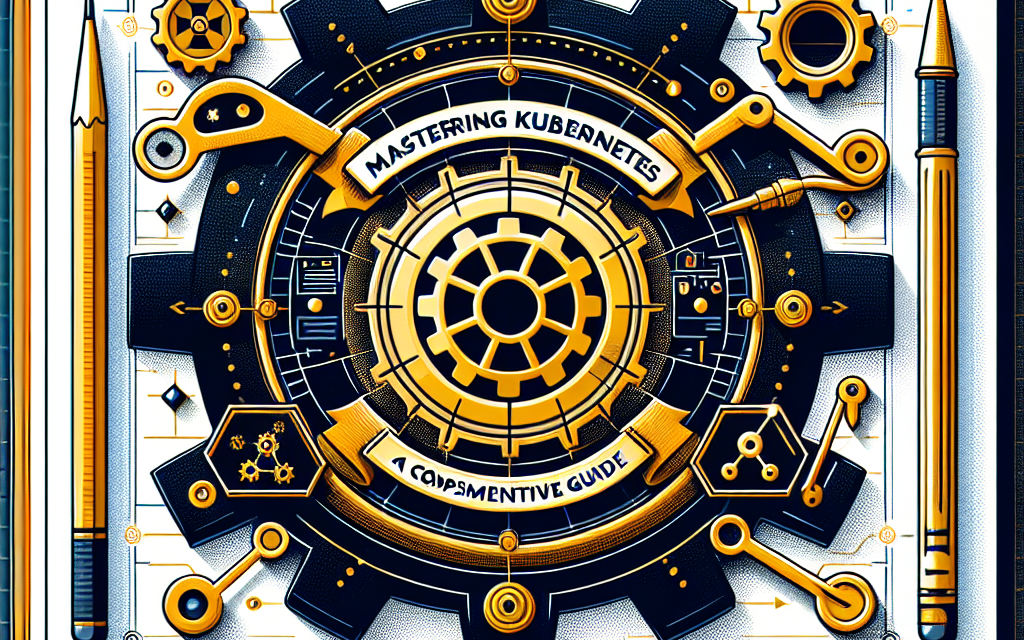In the rapidly evolving world of cloud-native technologies, Kubernetes has emerged as the gold standard for container orchestration. As organizations increasingly adopt Kubernetes, the complexity of managing multiple configurations and deployments becomes a significant challenge. Enter Kustomize, a powerful tool that simplifies Kubernetes resource management and enhances productivity. In this comprehensive guide, we’ll dive into the intricacies of Kustomize, empowering you to master this vital tool for your Kubernetes cluster.
What is Kustomize?
Kustomize is a configuration management tool that unlocks the power of Kubernetes manifests without requiring templating. It allows users to customize Kubernetes resources and apply overlays, making the management of deployment configurations easier and more systematic. Kustomize is integrated into kubectl, enabling users to manage their Kubernetes clusters seamlessly.
The Need for Kustomization
Kubernetes applications are typically composed of numerous YAML configuration files for different resources such as Pods, Services, Deployments, and ConfigMaps. As applications grow and environments diversify (development, testing, production), maintaining these files becomes cumbersome.
Kustomize addresses this by enabling:
- Customization without altering original YAML files.
- Layered configuration to manage multiple environments with ease.
- Declarative control where you can define your desired state.
Key Concepts of Kustomize
Before diving into usage, let’s cover some essential concepts of Kustomize.
1. Kustomization File
At the heart of Kustomize is the kustomization.yaml file. This file defines the desired state of your resources, including what to customize and how to do it.
2. Base and Overlays
Kustomize introduces the concept of bases (standard resource definitions) and overlays (custom configurations for specific environments). You can have a base that includes core resources and different overlays that tweak these resources for development, staging, or production.
3. Resources
Resources are the actual Kubernetes manifests (YAML files) you want to manage. These are referenced in the kustomization.yaml file to apply customizations.
4. Patches
Kustomize allows you to apply patches to resources defined in your base. Patches can be strategic or JSON-based, enabling granular changes to your manifests.
5. ConfigMap and Secret Generators
Kustomize can generate ConfigMaps and Secrets using files or literal values, helping to manage sensitive data and configuration settings effectively.
Getting Started with Kustomize
Step 1: Install Kustomize
Kustomize is included by default in kubectl (version 1.14 and above), which simplifies installation. You can verify if Kustomize is available with:
kubectl kustomize versionIf you need to install it separately, you can follow the instructions from the Kustomize GitHub repository.
Step 2: Create a Base
Start by creating a directory for your base. Inside, define your resource YAML files (like deployments, services, etc.).
# backend-deployment.yaml
apiVersion: apps/v1
kind: Deployment
metadata:
name: my-app
spec:
replicas: 3
selector:
matchLabels:
app: my-app
template:
metadata:
labels:
app: my-app
spec:
containers:
- name: my-app
image: my-app:latestNext, create a kustomization.yaml file:
# kustomization.yaml
resources:
- backend-deployment.yamlStep 3: Create Overlays
Now, create an overlay directory for your development and production environments.
Development Overlay
mkdir -p overlays/devInside overlays/dev, create a new kustomization.yaml:
resources:
- ../../base
patchesStrategicMerge:
- dev-patch.yamlThen, create a dev-patch.yaml to modify the number of replicas:
# dev-patch.yaml
apiVersion: apps/v1
kind: Deployment
metadata:
name: my-app
spec:
replicas: 1Production Overlay
Repeat the process for the production overlay:
mkdir -p overlays/prod
# Create overlays/prod/kustomization.yaml
# Similar to dev, but with a different number of replicas.Step 4: Build and Deploy
To build your manifests, navigate to the overlay directory and use:
kubectl apply -k overlays/devThis command will render the complete manifests, apply patches, and deploy your resources to the Kubernetes cluster.
Advanced Features
1. Multi-Resource Customizations
Kustomize offers functionality to customize multiple resource types seamlessly using the same kustomization file, thereby improving organization and clarity.
2. Plugins and Customization
You can extend Kustomize functionality with custom plugins, allowing tailor-made solutions tailored to enterprise requirements.
3. Integration with CI/CD
Integrating Kustomize into CI/CD pipelines enhances deployments, enabling automated testing across multiple environments while leveraging the Kustomize base and overlays.
Conclusion
Kustomize is an invaluable tool for Kubernetes users, simplifying resource configuration and enhancing clarity in managing various environments. With the concepts of bases, overlays, and patches, Kustomize reduces complexity and increases efficiency in application management and deployment.
As Kubernetes continues to evolve, mastery of tools like Kustomize will empower teams to build more robust, scalable, and maintainable solutions. Start experimenting with Kustomize in your projects today, and streamline your Kubernetes workflows!
By following this guide, you are well on your way to mastering Kubernetes Kustomize and positioning yourself as an adept Kubernetes operator ready to tackle the challenges of cloud-native environments. Happy Kustomizing!





